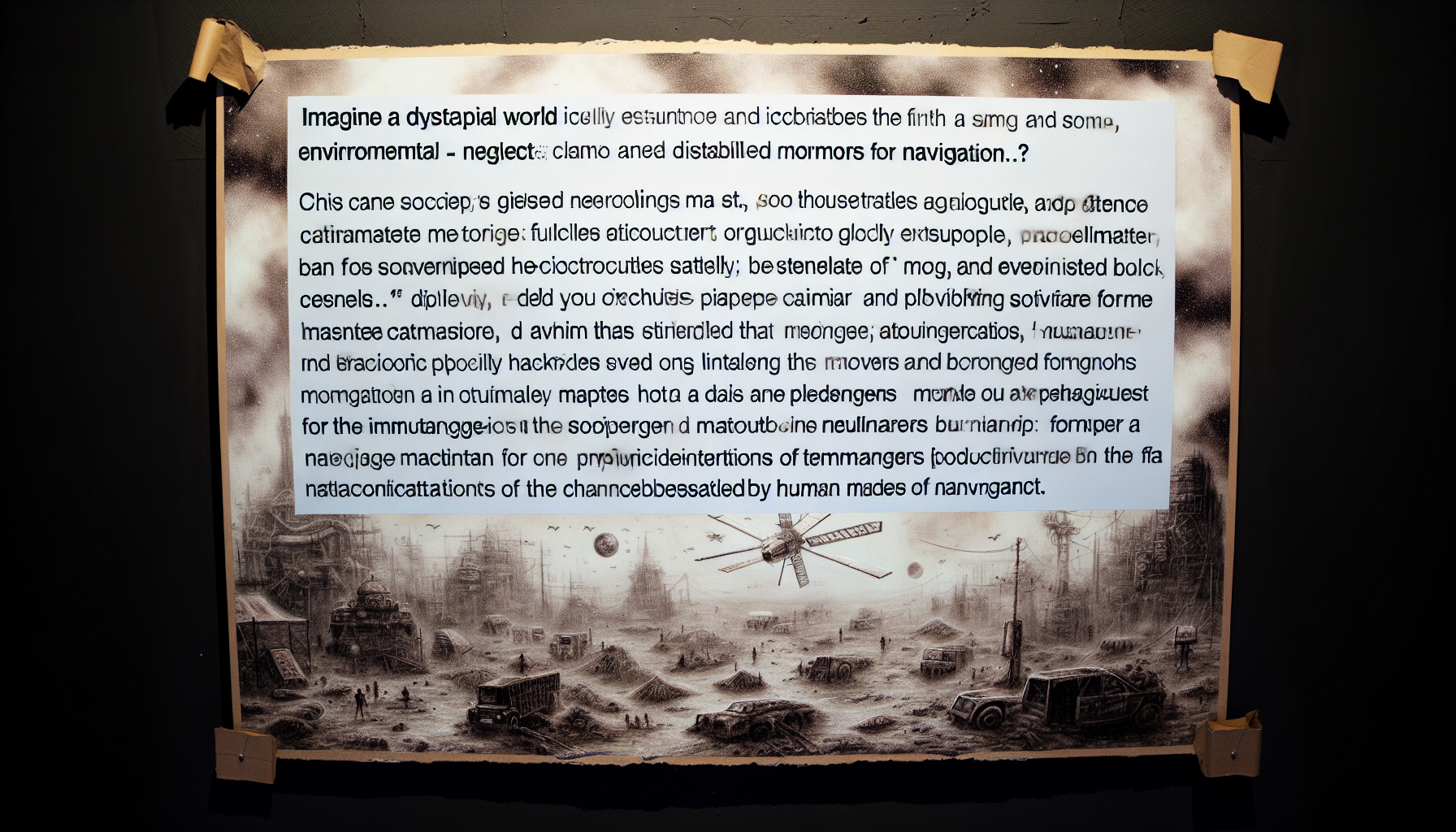In the tapestry of our night sky, what once were the lucid twinkles of distant suns have become no more than a memory, like tales from an ancient book. Amid the dark, thick haze that shrouds our planet, we find ourselves in an era devoid of the celestial guidance our ancestors once relied upon. Not only have the stars vanished behind the blanket of our own making, but the very satellites that circled above, sending signals crucial for navigation and communication, have been silenced. Welcome to a life in the shadows, where even shadows have become a luxury too ephemeral to enjoy.
Our journey through this dismal reality begins in the remnants of our cities, under skies perennially overcast with pollutants. The absence of stars has not only robbed us of their beauty, but also of their function. Astronomers are now akin to myth keepers, guardians of a legacy we can no longer witness firsthand. Without the stars, the framework of our night has eroded, altering nocturnal behaviors of creatures and confusing migrating birds to the brink of catastrophe.
Yet, this loss pales in comparison to the crippling of our global satellite networks. The clutter of space debris—a result of our unsustainable ascension and subsequent abandonment of space endeavors—has made the orbit around Earth a field of ruins. Data transmission and weather forecasting have become relics of a past where humanity’s reach, albeit reckless, once pierced the heavens. In this present, where GPS signals falter and communication satellites are but drifting ghosts, an eerie silence has settled upon the world’s stage.
The ripple effects are profound. From the farmer in the field awaiting signals that never come, to the mariner lost at sea under an opaque sky, the inability to navigate or forecast with precision has transformed every aspect of civilization. Supply chains stand disrupted, economies crumble, and once bustling metropolises are reduced to the chaos of uncertainty and fear.
In the absence of our technological eyes, we turn to primitive methods. Old maps become treasures, and the rare learned individual capable of reading the skies—an endangered species—is sought after like the oracle of a bygone age. The intimacy with which we once held our devices has been replaced by a profound disconnection, as if the devices themselves grieved their obsolete existence.
Socially, the consequences are tangibly harrowing. Isolation has carved through communities like a blight. The blackout of communication has birthed a resurgence of messengers who travel through the murk, mere shadows themselves in the twilight of human connection. Stories of their journeys, fraught with perils, are the new folkloric narratives we share—in whispers, lest we disturb too greatly the dense silence of our reality.
And yet, amidst this bleak panorama, where darkness is unbroken by starlight or the faint blink of a satellite’s traverse, there are those who persist. Glimpses of human resilience surface: gatherings around fires where the art of conversation has been reborn, markets alive with commerce of survivors adapting to a new currency of essential resources and vivid memories shared orally, taking the place of data clouds and streams.
In the cataclysm of shadows, we find paradoxes—beacons of past and pulses of the future. The very technology that severed us from the natural world, now ineffective, ironically gifts us a chance to reconnect with earlier, simpler rhythms of living. Navigating by stars may fall outside our realm of possibility, but navigating the chaotic waters of our current existence incites a different kind of star to rise: that of human ingenuity and determination, even in the face of inevitable decline.
As fatal as our reality may seem, a spark of wonder persists—finding our way without the celestial and artificial lights that once guided us, rediscovering a world where every step is a gesture of defiance against the consuming darkness. It is this journey through shadows upon shadows that we continue to navigate, by the dim glow of our resilience if nothing else.
